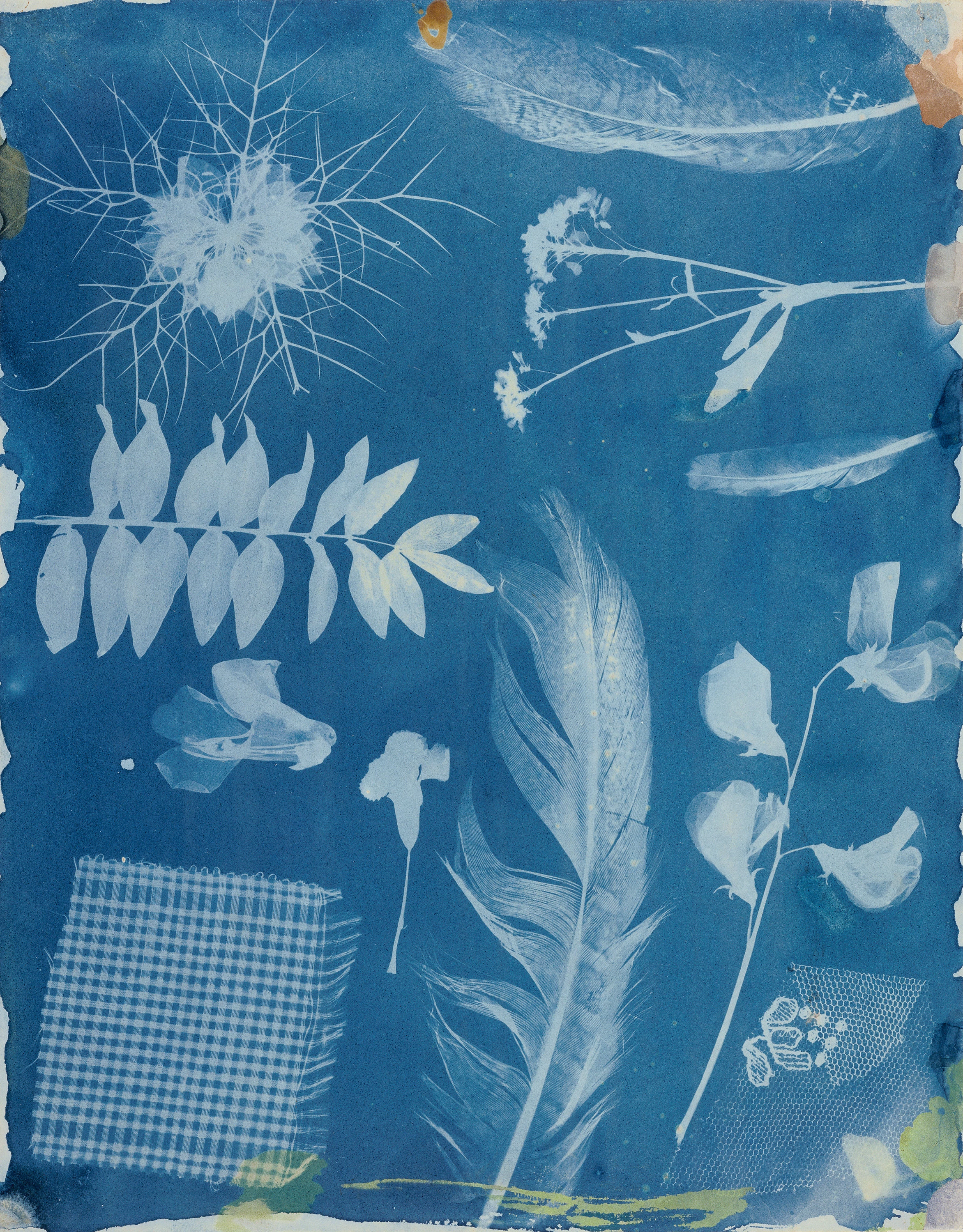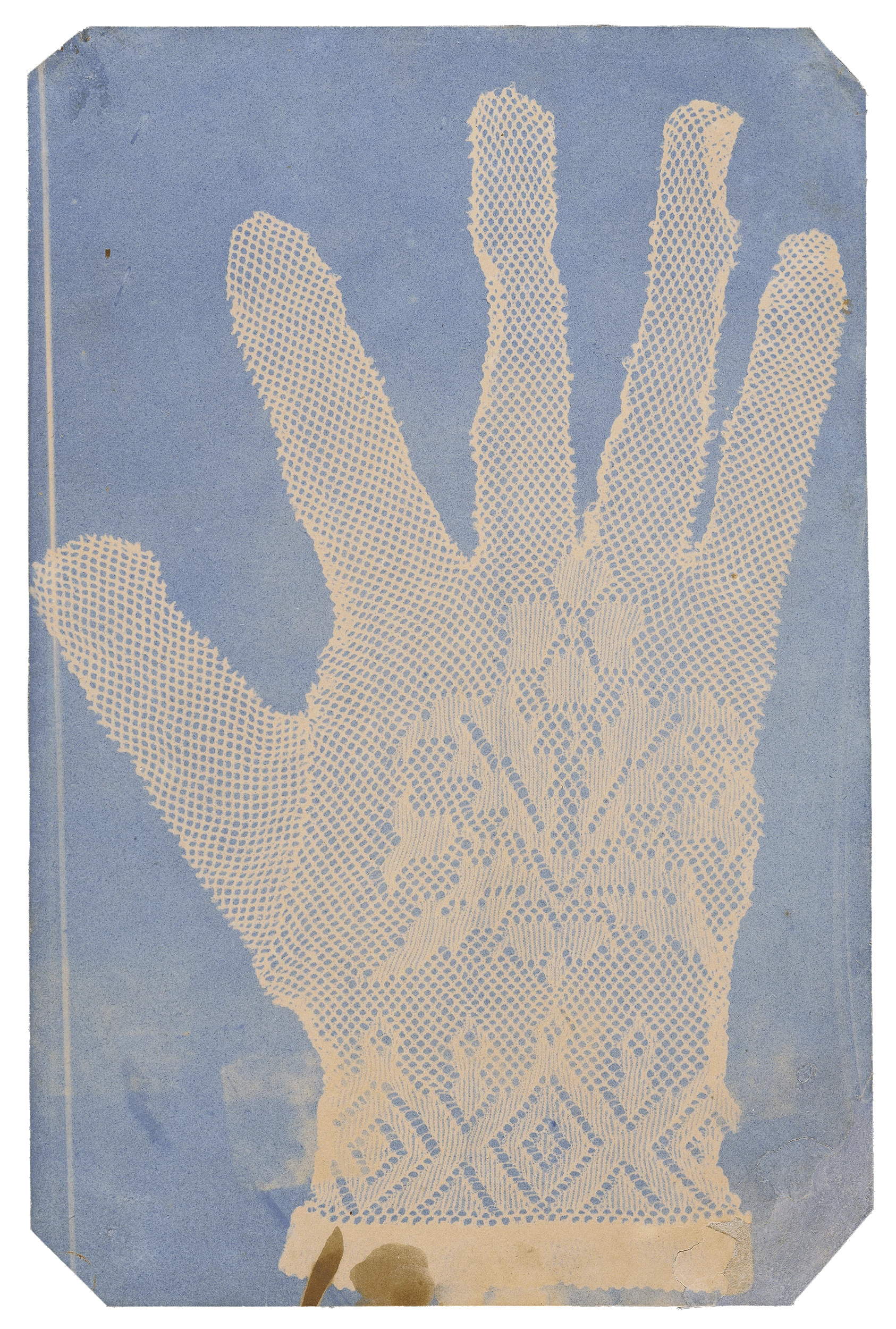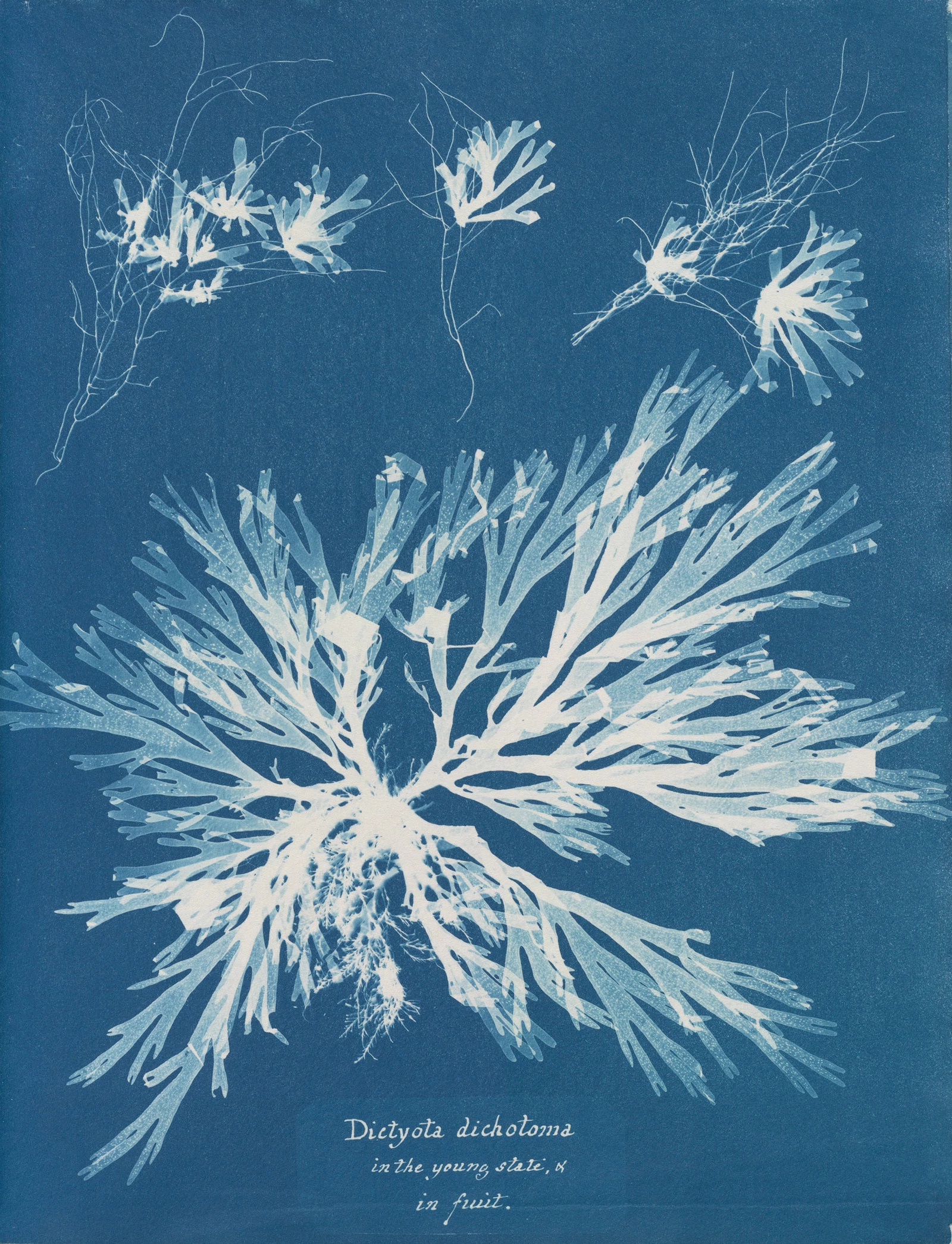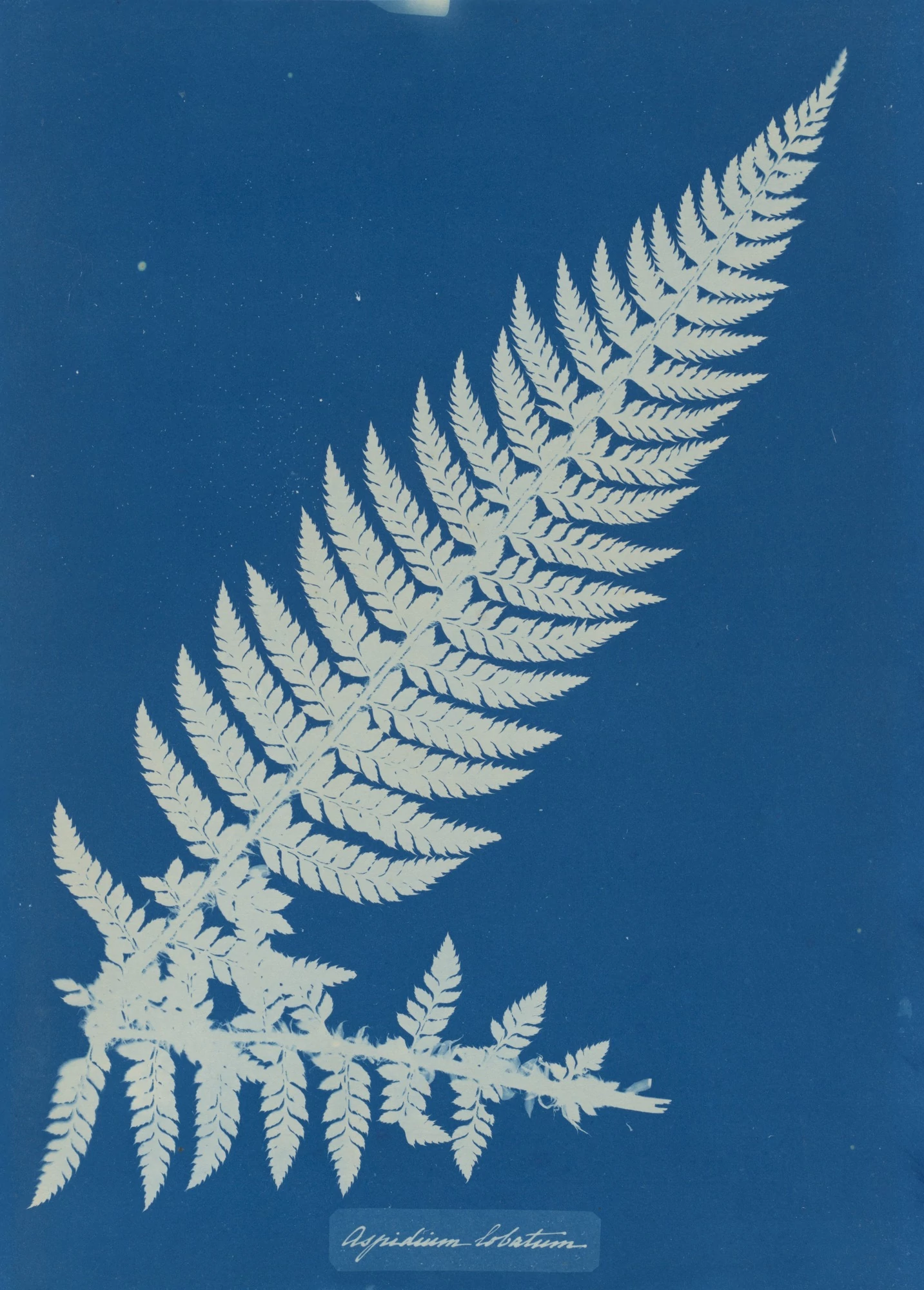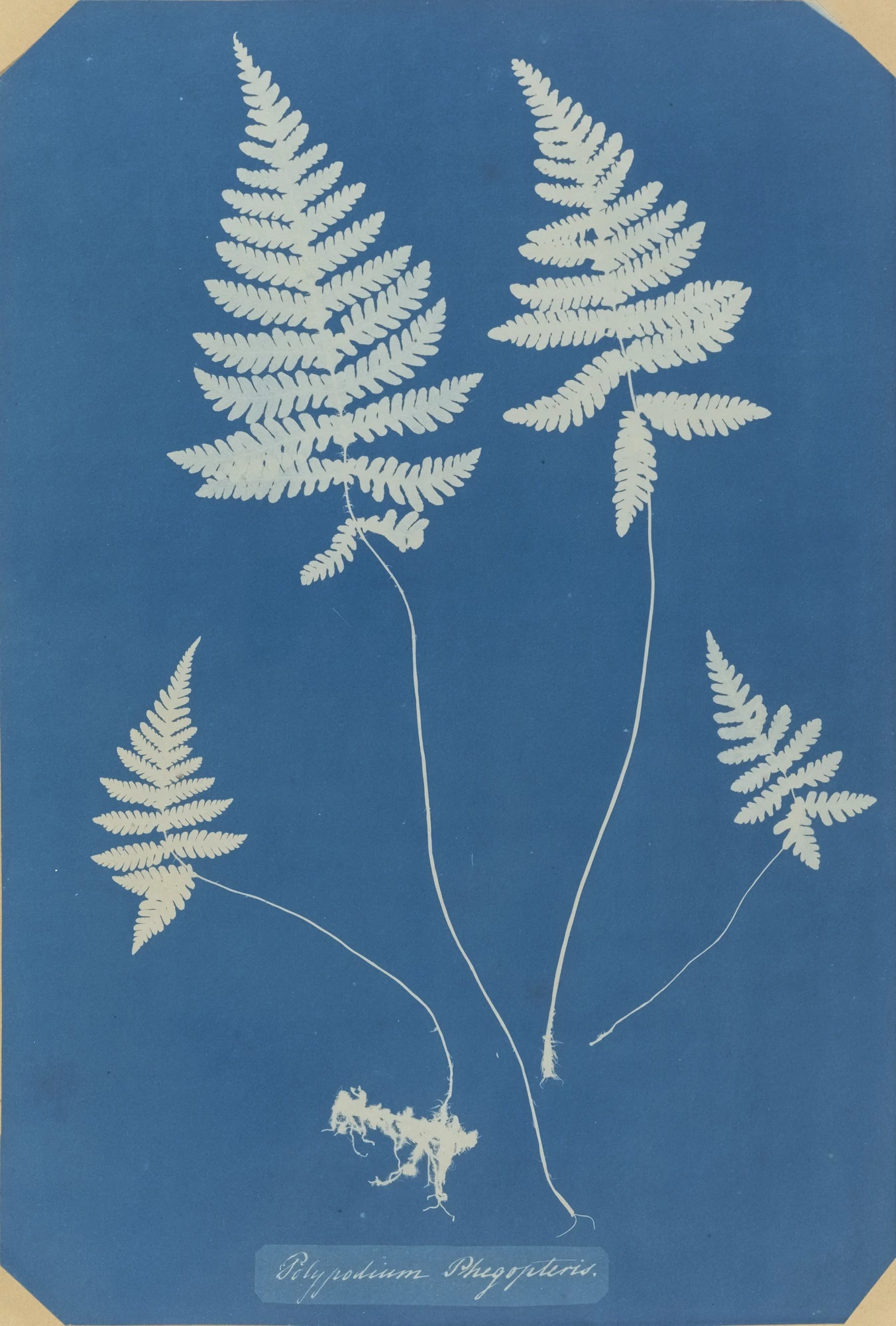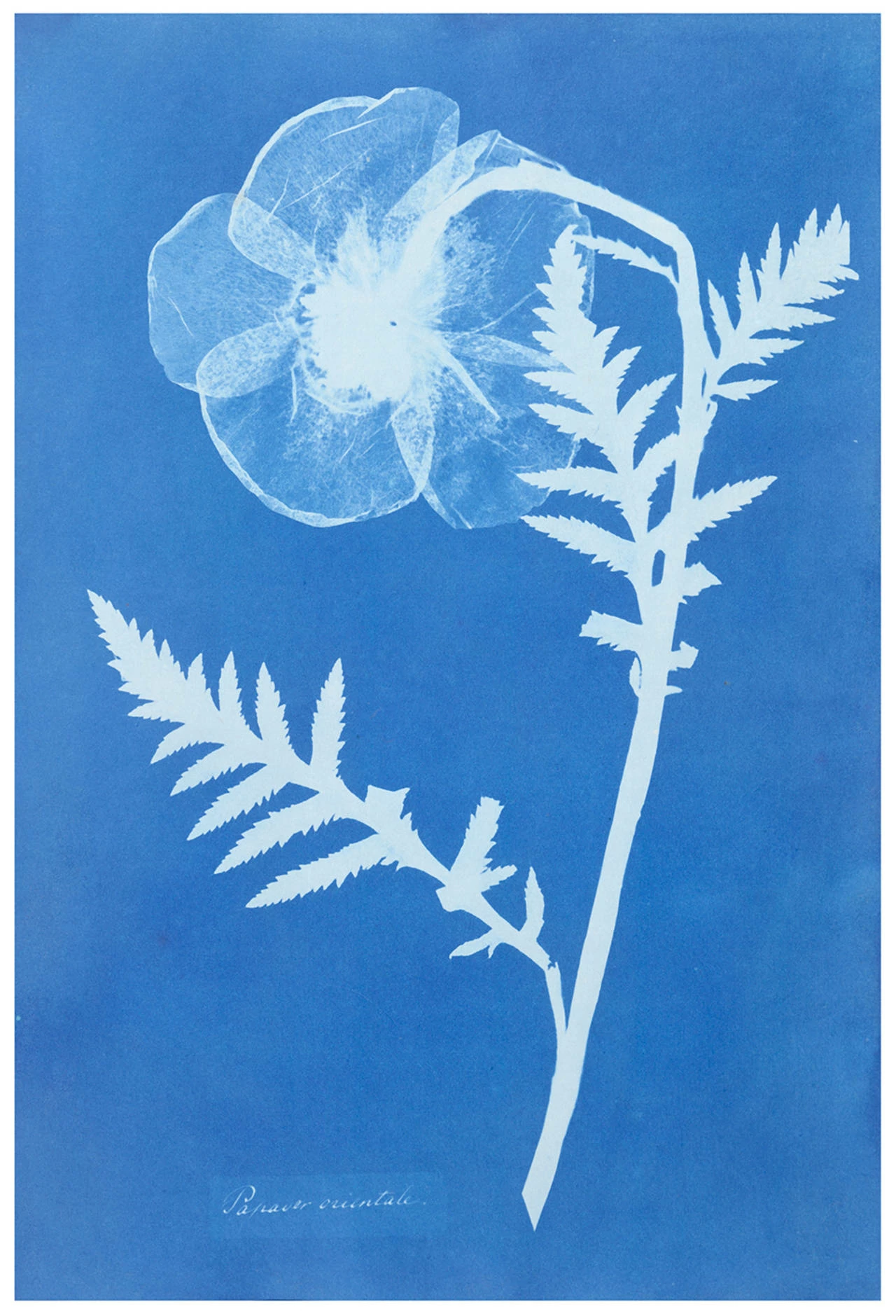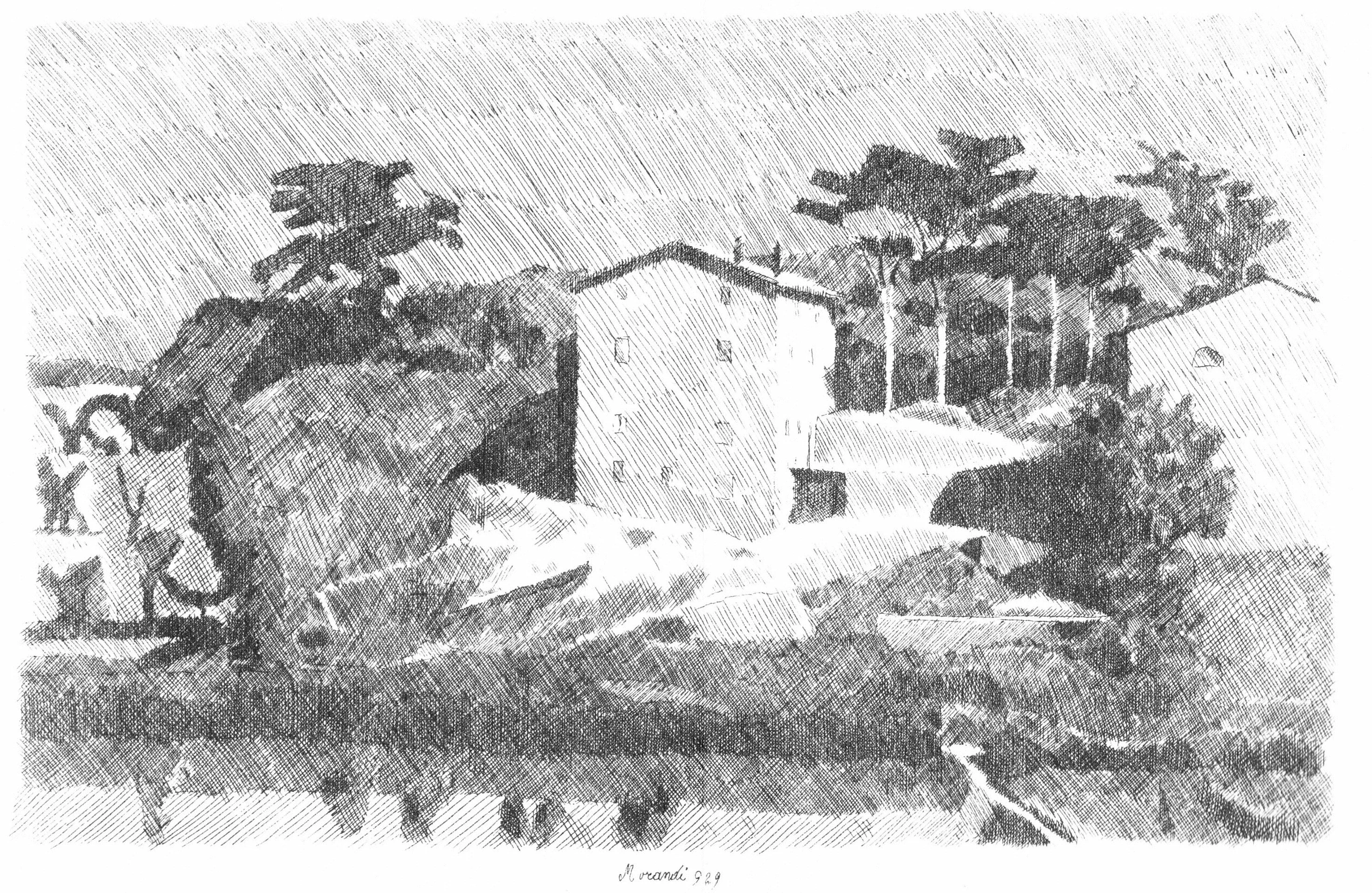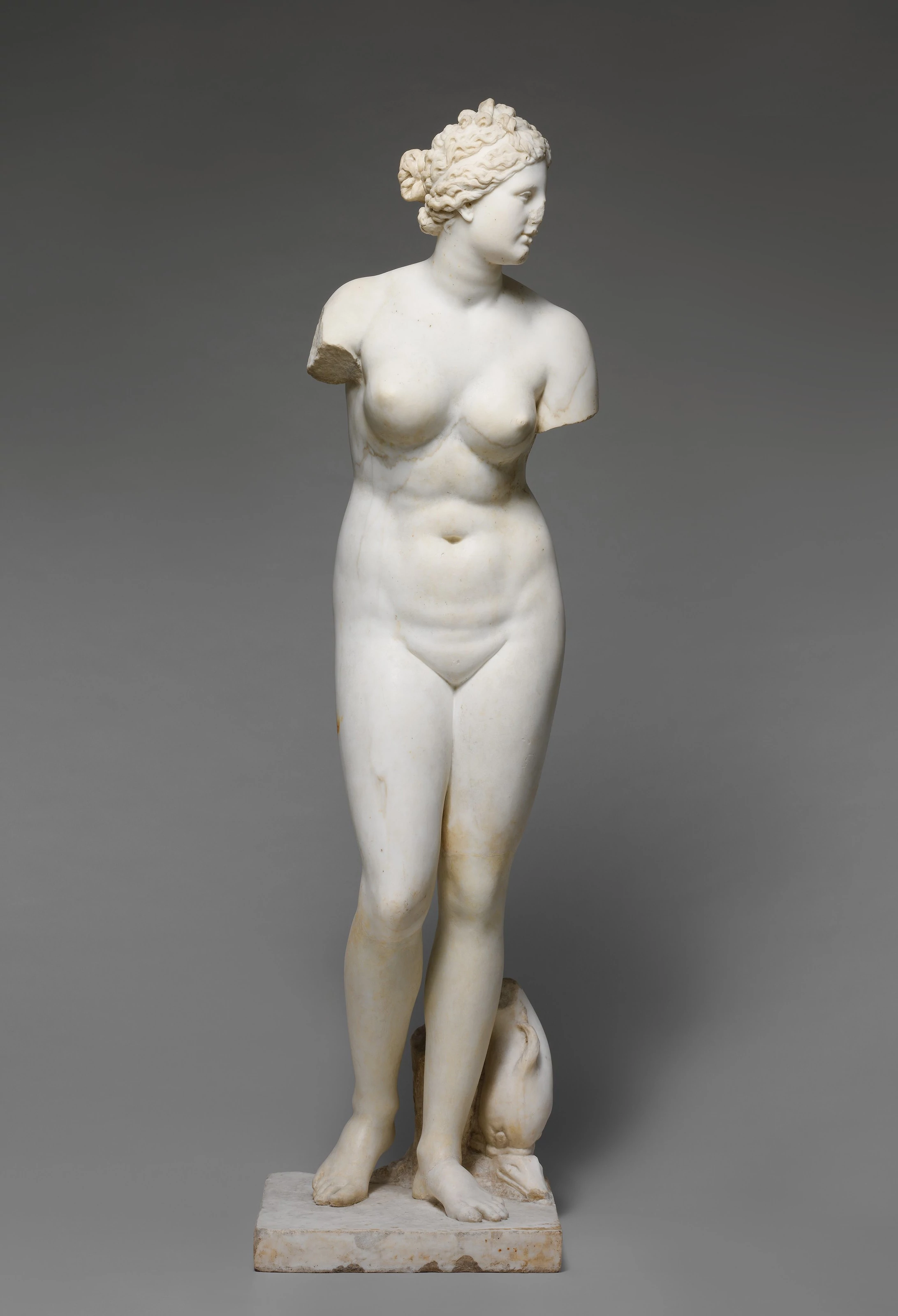From the greek works kuáneos, meaning ‘dark blue’ and túpos, meaning ‘mark or impression’ a cyanotype is a photoreactive print created by treating paper with ferric ammonium citrate or ferric ammonium oxalate, and potassium ferricyanide. The ingredients and cheap and the reproductions are clear, though distinctly cyan, and after its invention in 1842 by Sir John Herschel, it was used by amateur botanists, scientists, the occasional artist, and most famously by architects, who used the process to create blueprints.
